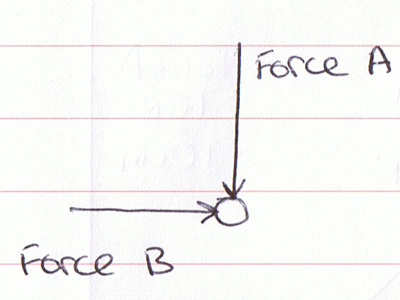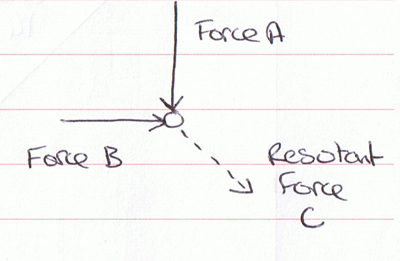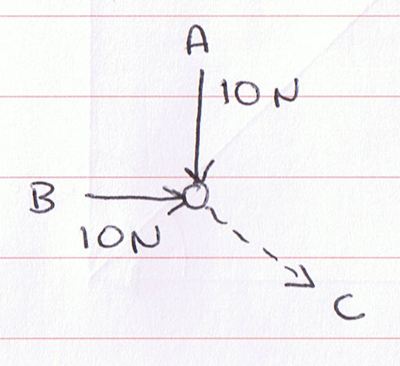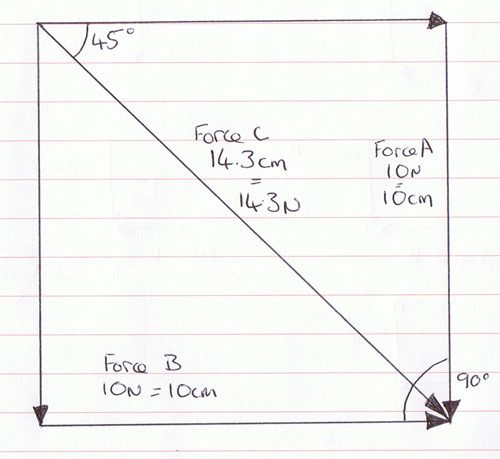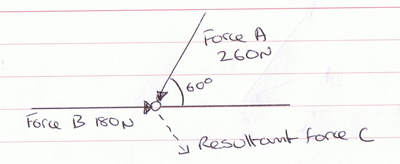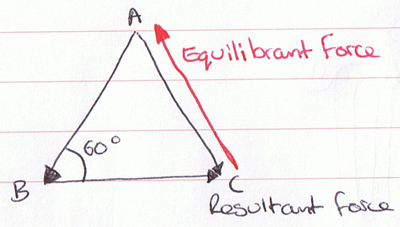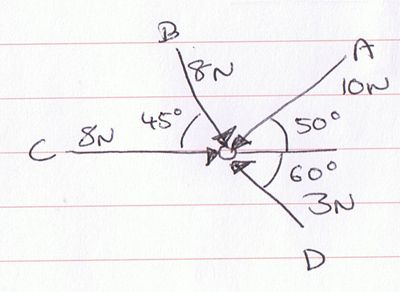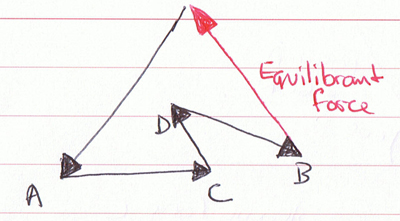So I’ve got structures, forces and how forces are applied but what if you have more than one force acting on an object at one time?
Dean used a really good visual example: think about a tennis ball floating on a pond, a pump is pushing the water in one direction and a breeze is blowing in another, which direction will the tennis ball move in?
The two forces, A and B, combine to form the resultant force C
When doing structural analysis you must keep in mind that any value that has a magnitude and a direction can be drawn as a vector, so, if you put values to the forces A and B you can work out the value of the resultant force C.
By drawing the forces involves as vectors you can use graphical analysis to work out force C by drawing a parallelogram of forces. You have to draw each vector accurately and to scale, so 10N would be 10cm. By measuring the resulting vector length and angle you can state accurately the value and direction of the resultant force:
You can use a triangle of forces to work out the equilibrant force, or the force that is of the correct direction and magnitude to keep the ball where it is:
The euilibrant force is exact opposite of the resultant force, in a triangle of forces you redraw the forces so they are sitting nose to tail, by using the same method of drawing out the triangle accuratly using the correct lengths and angles it’s simple to measure the equilibrant’s magnitude and angle to the ball.
If you have many different forces acting on your tennis ball and you want it to stay still you can draw a polygon of forces:
It doesn’t matter which order you draw the forces in as long as the flow is consistent, so they move from one to the next to the next:
Simples… well I’m sure it will be simples once I’ve done a bit more work on it ![]()

